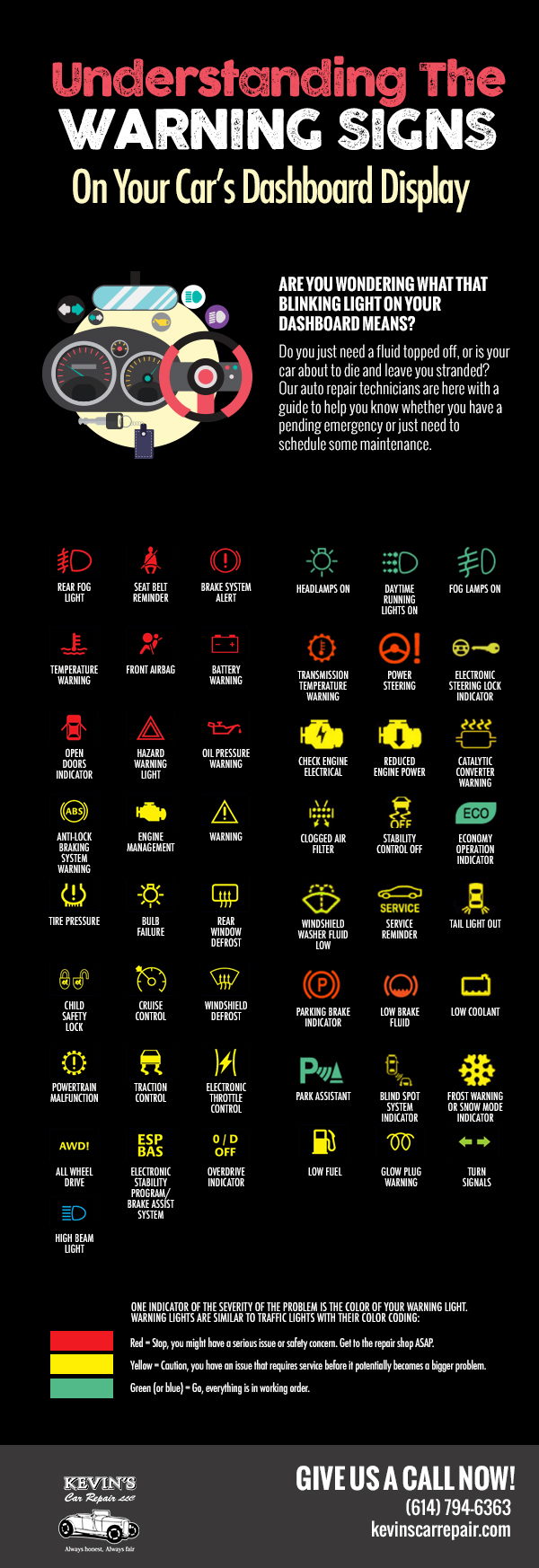Seeking Quality On The Warning Lights Displayed On Your Vehicle'S Control Panel? Learn Just How They Relate To Your Automobile'S Health And Wellness
Seeking Quality On The Warning Lights Displayed On Your Vehicle'S Control Panel? Learn Just How They Relate To Your Automobile'S Health And Wellness
Blog Article
Developed By-Lim Corbett
When you're behind the wheel, those glowing warning lights on your control panel can be a bit difficult. Do you know what they're trying to inform you concerning your vehicle's wellness? Understanding the relevance of these lights is vital for your safety and the durability of your lorry. So, the next time among those lights appears, would not you want to analyze its message precisely and take the required actions to resolve it?
Common Caution Lights and Interpretations
Determine usual caution lights in your auto and recognize their meanings to ensure secure driving.
One of the most typical caution lights consist of the check engine light, which signals issues with the engine or emissions system. If this light comes on, it's important to have your lorry inspected promptly.
The oil pressure advising light indicates reduced oil stress, calling for instant attention to avoid engine damages.
A flashing battery light could suggest a defective billing system, potentially leaving you stranded if not dealt with.
The tire stress surveillance system (TPMS) light signals you to reduced tire pressure, impacting vehicle stability and fuel effectiveness. Ignoring this could bring about harmful driving problems.
The abdominal light shows an issue with the anti-lock stopping system, endangering your capacity to quit rapidly in emergency situations.
Last but not least, the coolant temperature alerting light warns of engine getting too hot, which can result in extreme damages if not resolved quickly.
Understanding these usual warning lights will certainly help you address concerns immediately and keep safe driving problems.
Importance of Prompt Focus
Recognizing the typical warning lights in your auto is only the initial step; the value of without delay resolving these cautions can't be highlighted enough to guarantee your safety and security when traveling.
When a warning light illuminates on your dashboard, it's your automobile's way of interacting a potential issue that needs attention. Ignoring https://brakes-and-rotors51728.blogoxo.com/30339996/plan-for-an-insightful-exploration-of-the-exceptional-auto-service-center-that-can-transform-your-technique-to-cars-and-truck-upkeep can bring about extra extreme issues in the future, jeopardizing your safety and potentially costing you more out of commission.
Trigger attention to cautioning lights can protect against failures and accidents. For why not try this out , a flashing check engine light can show a misfire that, if left ignored, can cause damage to the catalytic converter. Addressing this without delay can save you from a costly fixing.
In a similar way, a brake system warning light might indicate reduced brake liquid or used brake pads, important elements for your safety when driving.
DIY Troubleshooting Tips
If you discover a warning light on your control panel, there are a few do it yourself fixing suggestions you can attempt before looking for specialist aid.
The initial step is to consult your automobile's guidebook to understand what the certain caution light suggests. Occasionally the concern can be as basic as a loose gas cap causing the check engine light. Tightening up the gas cap might deal with the trouble.
An additional usual concern is a low battery, which can cause numerous cautioning lights. Checking the battery connections for rust and ensuring they're safe and secure might fix the issue.
If a warning light lingers, you can try resetting it by separating the automobile's battery for a couple of mins and afterwards reconnecting it. Furthermore, checking your car's liquid levels, such as oil, coolant, and brake fluid, can assist repair advising lights associated with these systems.
Conclusion
To conclude, comprehending your auto's caution lights is necessary for maintaining your car running efficiently and securely. By immediately dealing with these signals and recognizing what they imply, you can avoid costly repair services and prospective malfunctions.
Keep in mind to consult your auto's handbook for particular information on each cautioning light and take action as necessary to make sure a hassle-free driving experience.
Stay informed, remain safe on the road!
